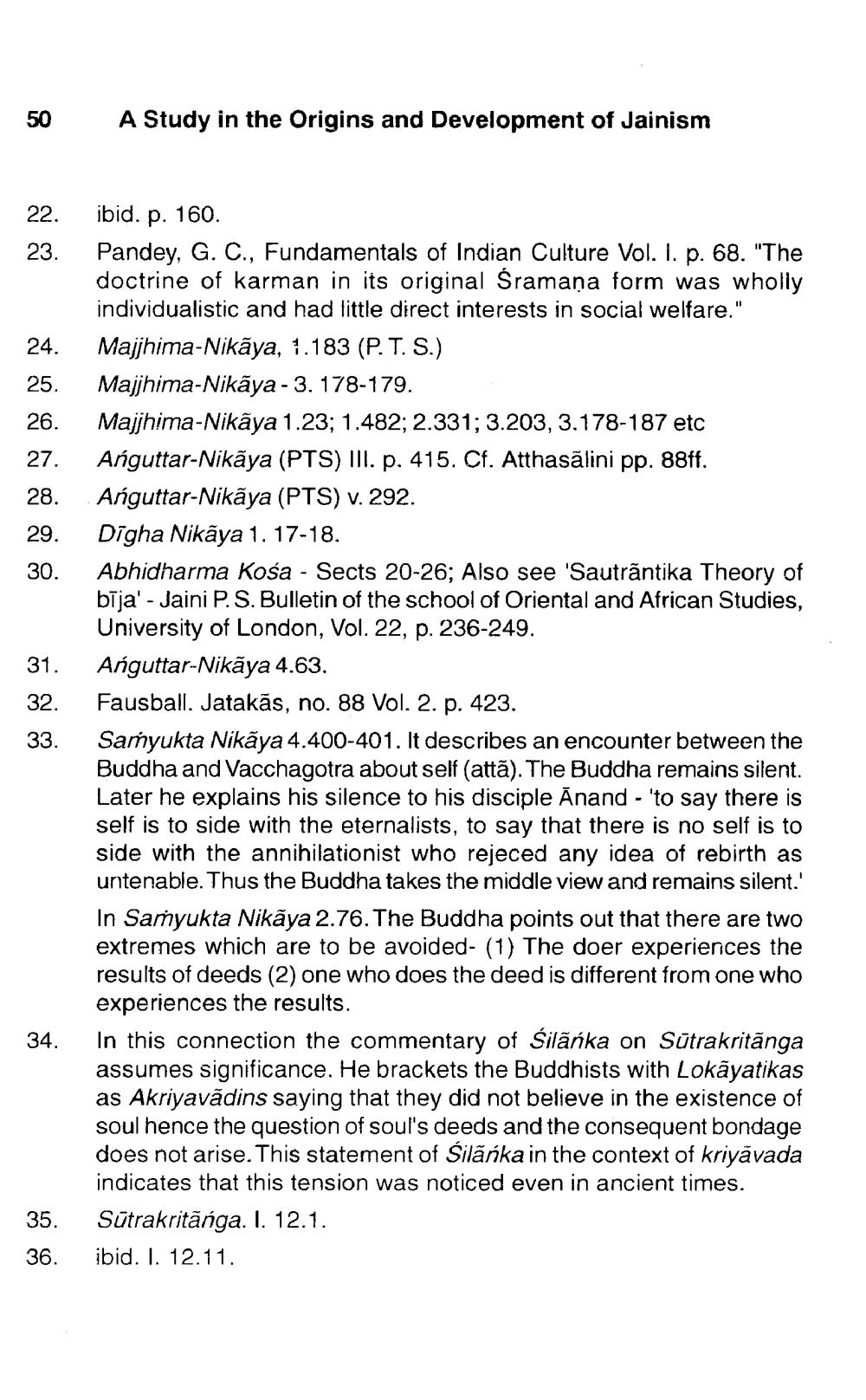________________
50
A Study in the Origins and Development of Jainism
22. 23.
25. 26. 27.
28.
29.
31. 32. 33.
ibid. p. 160. Pandey, G. C., Fundamentals of Indian Culture Vol. I. p. 68. "The doctrine of karman in its original Śramaņa form was wholly individualistic and had little direct interests in social welfare." Majjhima-Nikaya, 1.183 (P. T. S.) Majjhima-Nikaya - 3. 178-179. Majjhima-Nikaya1.23; 1.482; 2.331; 3.203, 3.178-187 etc Anguttar-Nikāya (PTS) III. p. 415. Cf. Atthasãlini pp. 88ff. Anguttar-Nikāya (PTS) v. 292. Digha Nikâya 1. 17-18. Abhidharma Kosa - Sects 20-26; Also see 'Sautrântika Theory of bija' - Jaini P.S. Bulletin of the school of Oriental and African Studies, University of London, Vol. 22, p. 236-249. Anguttar-Nikaya 4.63. Fausball. Jatakās, no. 88 Vol. 2. p. 423. Samyukta Nikấya 4.400-401. It describes an encounter between the Buddha and Vacchagotra about self (attā). The Buddha remains silent. Later he explains his silence to his disciple Anand - 'to say there is self is to side with the eternalists, to say that there is no self is to side with the annihilationist who rejeced any idea of rebirth as untenable. Thus the Buddha takes the middle view and remains silent.' In Samyukta Nikāya 2.76. The Buddha points out that there are two extremes which are to be avoided- (1) The doer experiences the results of deeds (2) one who does the deed is different from one who experiences the results. In this connection the commentary of Silãnka on Sūtrakritānga assumes significance. He brackets the Buddhists with Lokayatikas as Akriyavādins saying that they did not believe in the existence of soul hence the question of soul's deeds and the consequent bondage does not arise. This statement of Silãnka in the context of kriyāvada indicates that this tension was noticed even in ancient times. Sūtrakritânga. I. 12.1. ibid. I. 12.11.
34.
35. 36.




